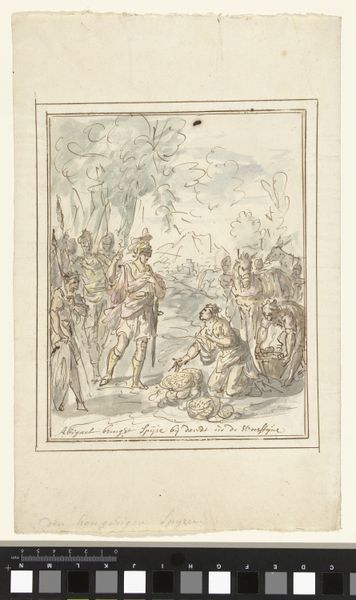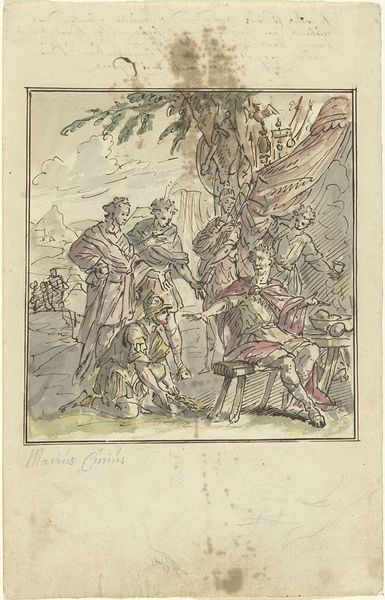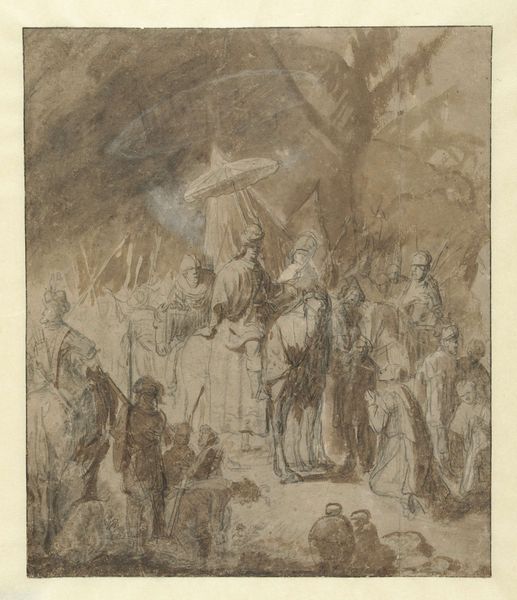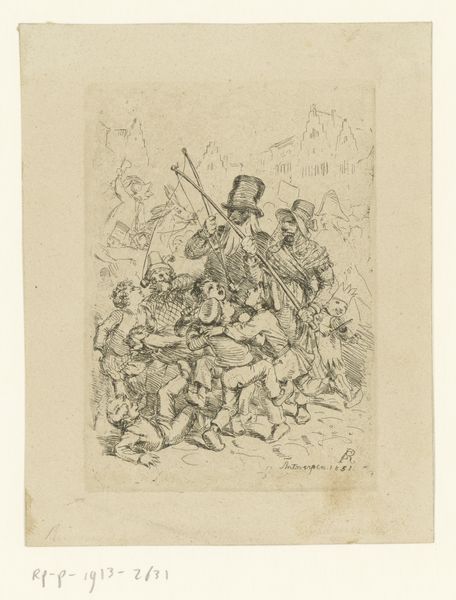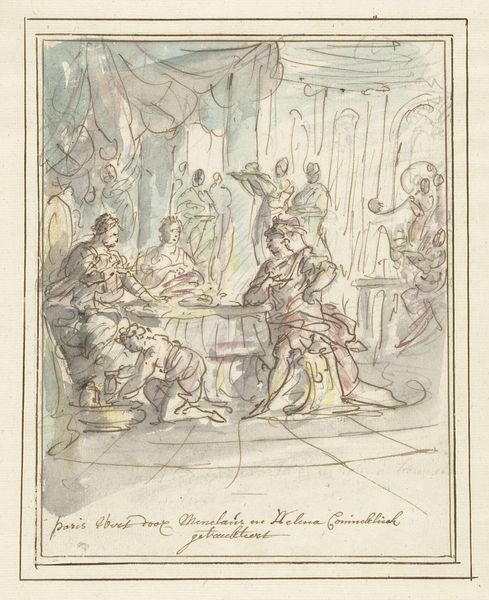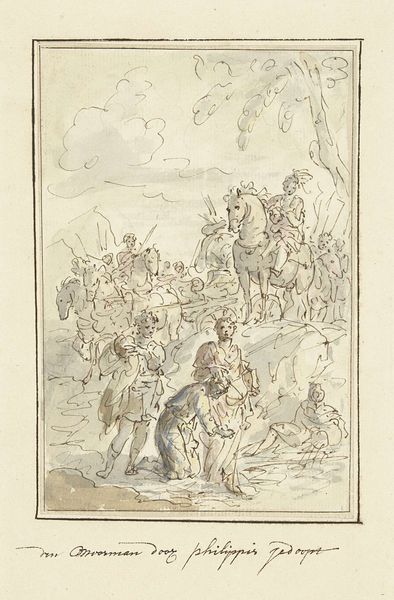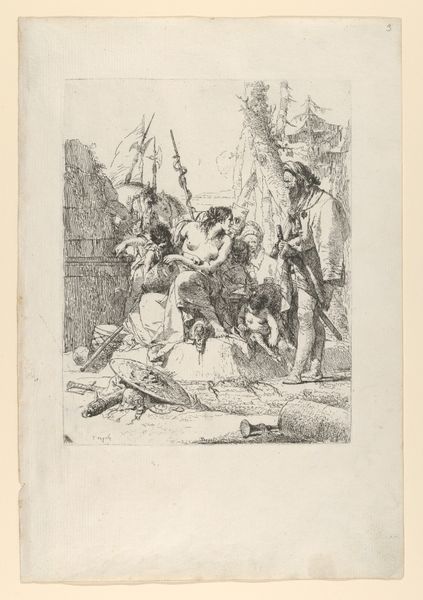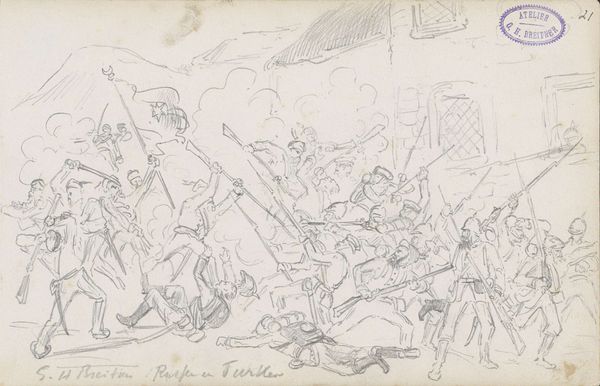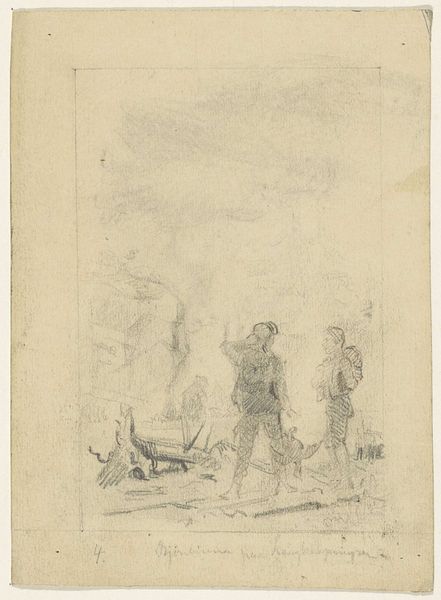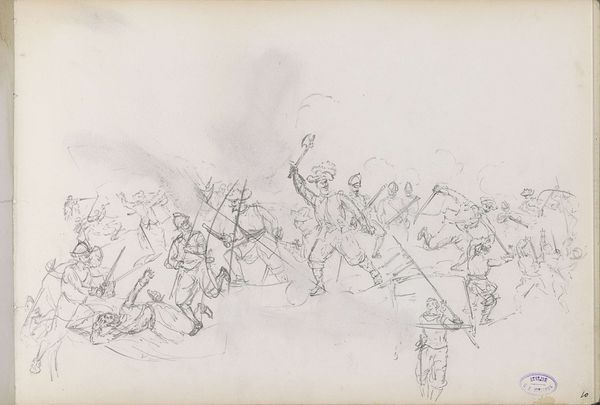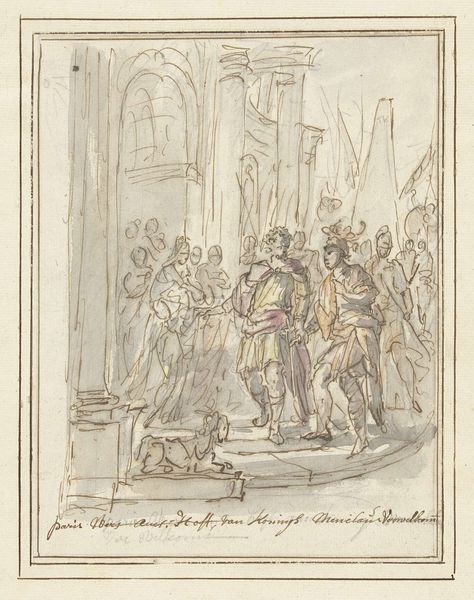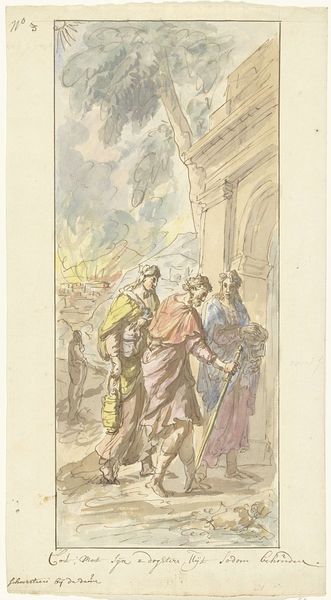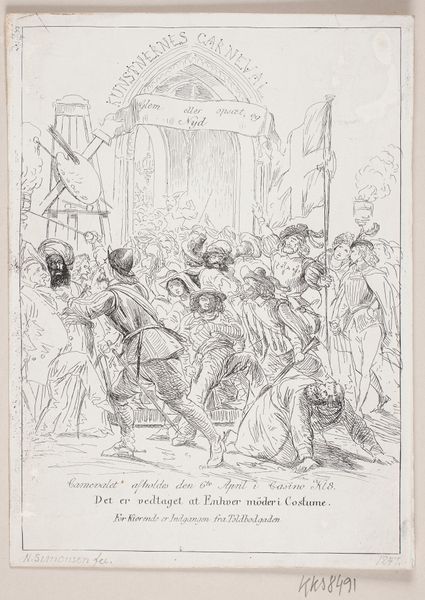
drawing, ink, pen
#
drawing
#
narrative-art
#
baroque
#
landscape
#
etching
#
figuration
#
ink
#
pen
#
history-painting
Dimensions: height 174 mm, width 127 mm
Copyright: Rijks Museum: Open Domain
Curator: Look at the drama unfolding in Elias van Nijmegen's "The Conversion of Paul," a pen and ink drawing created sometime between 1677 and 1755. Editor: There's such immediacy in the scene. Chaos erupts from the center – a figure prostrate, a rearing horse – bathed, strikingly, in vertical light beams. Is that supposed to be divine intervention? Curator: Precisely. The subject illustrates the biblical narrative of Paul’s sudden conversion on the road to Damascus, blinded by a divine light and voice. The artist used line work and layering, consistent with Baroque style, but rooted within a larger tradition of figuration in Dutch landscape drawing. Editor: I see the narrative force, definitely Baroque in its dynamism. Yet, even for such an intensely personal moment, Paul is integrated within his troop of figures. Van Nijmegen positions the scene not as isolated but very public. Curator: These kinds of depictions offered an entry point for popular interpretation of scripture and saints' lives during this time. It’s important to see how images like this circulated within a larger visual culture, shaping beliefs. The fallen figure becomes symbolic of a larger message about redemption. Editor: Absolutely. The act of 'seeing the light' and changing course speaks volumes about repentance and reform – a potent theme then, especially amidst religious and political turmoil. Was this kind of religious imagery commonly displayed? Curator: While altarpieces remained somewhat constrained by the Reformation, prints and drawings allowed for more individual engagement within domestic settings. People encountered these images, contemplating morality and destiny in their private lives. Editor: Interesting, to see these large themes reduced to an intimate scale – a way to make faith accessible to a wider public through art, democratizing both the viewing and the spiritual experience. Curator: Yes, van Nijmegen’s “Conversion of Paul” underscores how even deeply personal experiences are mediated by public forms and meanings. The Baroque love of spectacle serves a didactic, instructive purpose. Editor: Well, the drama pulled me in – thinking about how such historical images continue to reverberate with us today, influencing our own modern image world and expectations about narrative. Thanks!
Comments
No comments
Be the first to comment and join the conversation on the ultimate creative platform.
